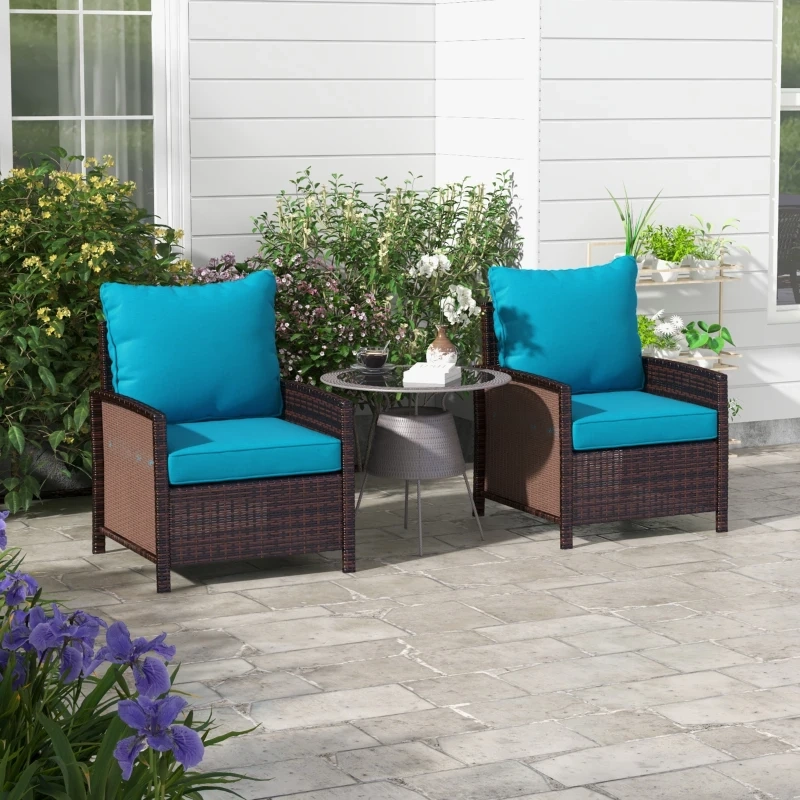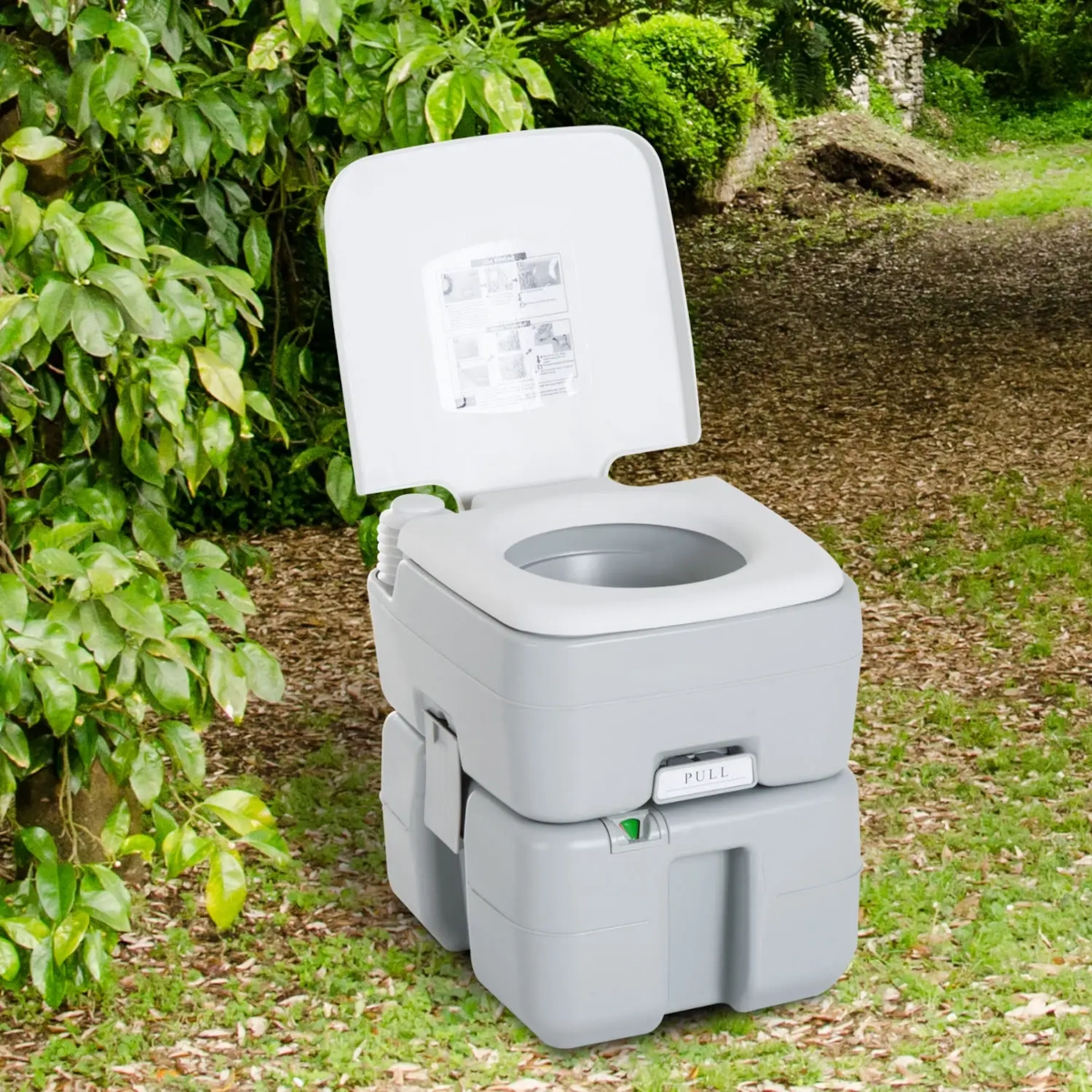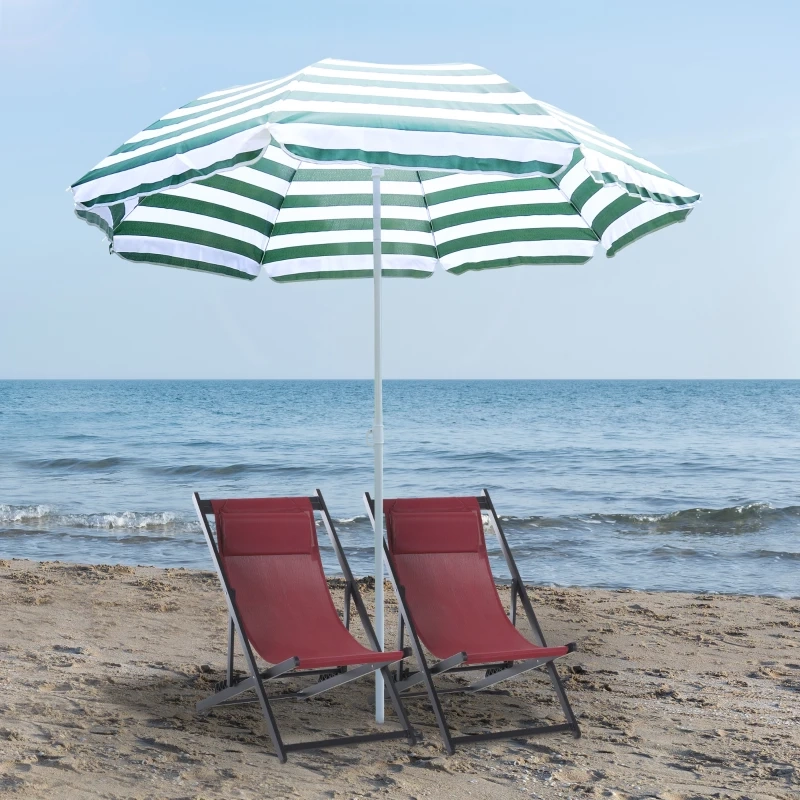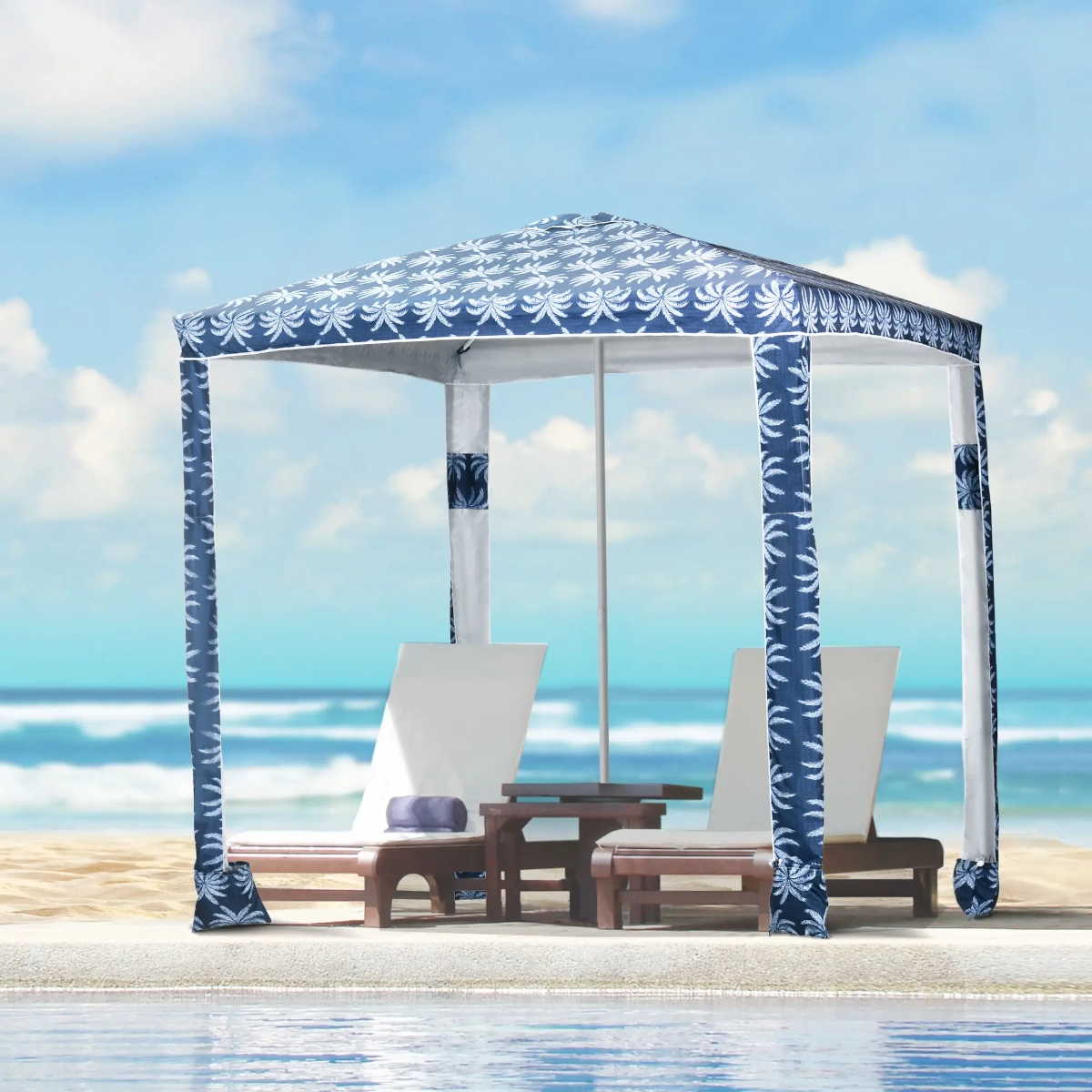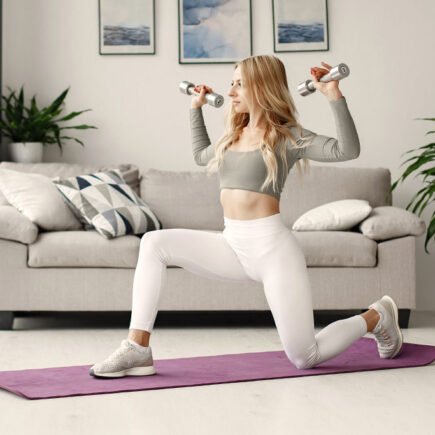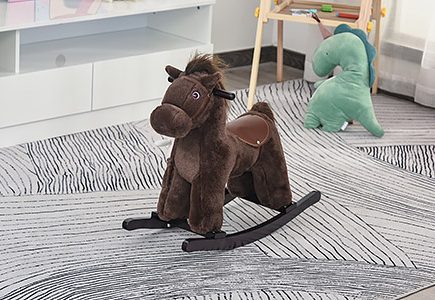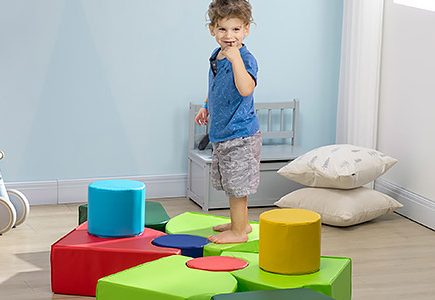A good beach umbrella can make all the difference when it comes to comfort during your beach day. It not only provides shade and protects you from harmful UV rays, but it also helps to create a more enjoyable space for relaxation. However, with so many options available, choosing the right size can be a daunting task. In this guide, we’ll break down the key factors you should consider when selecting the perfect beach umbrella, ensuring that your time under the sun remains cool and comfortable.
Understanding Beach Umbrella Sizes
Choosing the correct size is the first step in finding the ideal beach umbrella. The size is usually measured by the diameter of the canopy. Here’s a simple breakdown of what size umbrella works best based on your beach day setup.
1. Solo Beachgoer: 5-6 Feet in Diameter

If you’re heading to the beach solo or with just one companion, a smaller umbrella of about 5-6 feet in diameter is ideal. It’s enough to give you some protection from the sun without taking up too much space. These umbrellas are typically lightweight and easy to set up, making them perfect for individual use.
Tip: If you often go to the beach alone or with a friend, look for lightweight, portable umbrellas that are easy to carry. For a solo beach trip or a day out with one companion, the Outsunny 6.7 FT Beach Umbrella is the ideal choice. With a(170 cm) diameter, it provides just the right amount of shade without being bulky.
2. Small Group (2-4 People): 7-8 Feet in Diameter

For small groups, such as a couple or a family of four, you’ll want an umbrella with a larger canopy—around 7-8 feet in diameter. This size offers ample shade for a small group without feeling cramped. A larger umbrella will allow everyone to have their own space to relax under the shade.
Tip: When choosing an umbrella for a small group, consider one that has adjustable features. Perfect for small groups of 2-4 people, the Outsunny 7.5FT 2-in-1 Umbrella Shelter provides ample shade without feeling cramped. Its UPF50+ silver-coated canopy offers superior sun protection, while the adjustable height and side flaps ensure full coverage as the sun shifts.
3. Larger Groups (5+ People): 9-10 Feet or Larger
If you’re planning a beach day with a larger group of people, you’ll need a significantly larger umbrella, ideally 9-10 feet or more in diameter. This size ensures that everyone has plenty of space to gather under the shade. Larger umbrellas are especially important for families with children or groups who prefer to have extra room for beach chairs, towels, and other accessories.

Tip: For larger groups, consider investing in a beach umbrella that includes wind-resistant While larger groups (5+ people) typically require a 9-10 foot umbrella, the Outsunny Beach Umbrella offers a wind-resistant design with sandbags and a steel frame, making it a great alternative for those seeking stability in breezy conditions
Wind Resistance and Stability: A Critical Factor
One of the most overlooked factors when selecting a beach umbrella is how well it handles windy conditions. Beaches are often windy, and a poorly designed umbrella can easily blow away or tip over.
Key Features to Look For:
- Wind Vents: A beach umbrella with a vented top will allow the wind to pass through, reducing the chances of it getting blown away.
- Sand Anchors and Stakes: Many modern beach umbrellas come with sand anchors, which are essential for stabilizing the umbrella on windy days. These help to keep the umbrella firmly in place, even in gusty conditions.
- Sturdy Poles: The pole material is crucial for stability. Look for umbrellas with aluminum or steel poles, as these materials tend to be more durable and resistant to bending or breaking.

When choosing a beach umbrella, wind resistance and stability are key, and the Outsunny 6 FT Beach Umbrella delivers! Its vented UV50+ canopy allows wind to pass through, reducing the risk of tipping over. The sturdy steel frame with eight steel wire ribs ensures durability against sea breezes. Plus, the push-button tilt feature lets you adjust shade coverage with ease. If you want a lightweight, wind-resistant umbrella that keeps you cool and secure, this is the perfect pick!
Portability & Weight Considerations
While a larger umbrella may offer more shade, it could also be heavier and harder to carry. Portability is an important factor to consider, especially if you plan to travel or carry your umbrella a long distance.
Light and Easy-to-Carry Designs
If you’re looking for a lightweight option, aim for umbrellas that weigh between 2 and 6 pounds. These are typically easier to carry and set up, making them ideal for travelers or those who don’t want to lug a heavy umbrella to the beach.

For example, the Outsunny 6FT Tilt & Adjustable Beach Umbrella is lightweight, weighing just 2.86 lbs, making it easy to carry to and from your beach spot. Despite its lightweight, it offers ample coverage and includes adjustable features for maximum shade.
UV Protection & Fabric Quality
A good beach umbrella should offer UV protection to ensure you’re shielded from harmful sun exposure. Look for umbrellas with a high UPF (Ultraviolet Protection Factor) rating, as these can block up to 99% of the sun’s harmful rays.
Fabric Materials to Consider:
- Polyester: A common choice for beach umbrellas, polyester is durable, weather-resistant, and can offer UV protection with coatings such as silver or titanium.
- Canvas: Canvas is another durable option, though it may be heavier compared to polyester.
- Cotton: While breathable, cotton doesn’t provide as much UV protection as polyester or canvas.
When choosing your umbrella, ensure the fabric is treated for UV protection and water resistance to ensure it lasts through repeated use.
Adjustability and Easy-to-Use Features
Beach umbrellas should be easy to adjust to maximize shade as the sun moves throughout the day. Look for features such as tilt mechanisms and height-adjustable poles, which allow you to customize the shade coverage throughout the day.
Tip: Umbrellas with tilt features are a great option for ensuring you stay cool at all times. Some models, such as the Outsunny 6FT Round Beach Tilt & Ruffled Beach Umbrella, offer a push-button tilt mechanism that lets you adjust the angle of the umbrella for optimal sun coverage.
Durability & Frame Materials

The frame material plays a significant role in the durability of your beach umbrella. Common materials include aluminum, fiberglass, and steel.
Comparison of Frame Materials:
- Aluminum: Lightweight and resistant to rust, making it a popular choice for beach umbrellas.
- Fiberglass: More flexible and wind-resistant, but often more expensive.
- Steel: Very durable and sturdy, but can be heavier and may rust over time if not properly maintained.
When selecting a beach umbrella, consider one with a rust-resistant frame if you plan on using it frequently.
Extra Features and Accessories

When choosing a beach umbrella, additional features and accessories can enhance your overall beach experience. These features may not be necessary for everyone, but they can provide added comfort and convenience.
Built-In Sand Anchors
Sand anchors or stakes help keep the umbrella securely in place, even on windy days. Some umbrellas come with these anchors integrated into the design, while others offer them as separate accessories. These can be especially helpful for families or large groups, where the umbrella is more likely to be disturbed by wind.
Side Tables and Pockets
Some umbrellas come with built-in side tables, pockets, or even cup holders, allowing you to keep your items organized and within reach. These features are especially useful for beachgoers who like to keep snacks, drinks, or other items nearby.
Tip: If you’re planning on bringing a lot of gear to the beach, look for an umbrella with additional storage features. These extra conveniences can help keep your beach setup neat and organized.
Carry Bags and Portability
A good carry bag can make all the difference when it comes to transporting your umbrella. Many umbrellas come with lightweight carry bags, making it easier to take them to and from the beach. Look for bags that have padded straps or handles for added comfort during transport.
Aesthetic Appeal: Colors, Patterns, and Design
While functionality is the primary concern when choosing a beach umbrella, the style and design can also play a role. Whether you prefer a classic design or something more vibrant, choosing the right look can complement your personal taste and your overall beach setup.
Color and Pattern Choices
- Classic: Neutral tones like beige, white, or gray provide a clean, timeless look that suits most beach environments.
- Bold & Fun: Bright colors and playful patterns can add a touch of personality to your beach setup and make it easier to spot your umbrella among other beachgoers.
Tip: Consider how your umbrella will match the rest of your beach gear. A well-coordinated setup can make your day at the beach more enjoyable.
How to Care for Your Beach Umbrella
Proper maintenance can extend the life of your beach umbrella. Here are a few simple tips to keep your umbrella in top shape:
Cleaning Tips
- Fabric Care: Gently clean the fabric with mild soap and water. Avoid harsh chemicals, as they can damage the fabric’s UV protection coating.
- Pole Care: After each use, rinse the pole with fresh water to remove salt and sand, which can cause corrosion over time.
Storage Recommendations
- Dry Before Storing: Always let your umbrella dry completely before storing it to prevent mold and mildew growth.
- Protect from Harsh Elements: Store your umbrella in a cool, dry place, away from direct sunlight, to prevent the fabric from fading or degrading.
Frequently Asked Questions (FAQs)
How do I prevent my beach umbrella from tipping over on windy days?
To prevent tipping, use a sturdy sand anchor or an auger-style anchor to secure the base deeply in the sand. Additionally, choose a wind-resistant umbrella with a vented top to help the wind flow through without causing instability.
What can I do if my beach umbrella is too heavy to carry?
Look for lightweight models weighing between 2 and 6 pounds. Many umbrellas come with carrying bags designed for easy transportation, and some have adjustable handles to improve portability.
How can I ensure my beach umbrella provides enough shade during the afternoon?
Opt for a tilt-adjustable umbrella that allows you to change the angle of the canopy as the sun moves. Setting up the umbrella early in the day can also help you position it for maximum coverage.
What should I do if my beach umbrella fabric starts to fade from sun exposure?
To prevent fabric fading, always store the umbrella in a dry, shaded place when not in use. Regularly clean it with mild soap and water, and apply a fabric protector spray designed for UV protection.
How do I keep my beach umbrella from blowing away in strong winds?
Use additional weight such as sandbags or water buckets to weigh down the umbrella. Look for umbrellas with integrated sand anchors, and choose models made with durable materials like steel or fiberglass for added stability.

